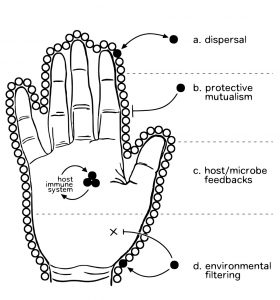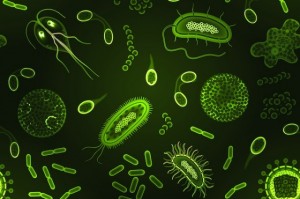(This post was written by Roo Vandegrift at the University of Oregon) I was recently asked to spearhead the writing of a review centered around the interaction between the concept of hygiene and our increasingly nuanced understanding of the human skin microbiome for the Biology and the Built Environment (BioBE) Center at the University of …
In light of the Cold Fire that started yesterday evening in the central valley of California, I started to wonder, ‘what happens to microbes?!’ I found myself in a literature click hole of fantastic papers that studied how fire impacted soil microbial communities in several different ecosystems. What surprised me most is how fast researchers …
We are always looking to recruit more people to contribute to microBEnet on topics related to microbiology of the built environment. And if you have something to say about this topic, by all means, we want you to blog here. Tell us your stories about your work about your projects about your outreach and papers and …
June 21 was International Swab Day for the MetaSUB project. MetaSUB stands for “Metagenomics and Metadesign of the Subways and Urban Biomes”, an initiative in which experts together with citizens will study the microbial ecosystems of public transportation systems from all over the world. From the MetaSUB website: By developing and testing standards for the …
In the past, we have lamented the poor representation of microbes in natural history museums. And so I must mention that there’s a wonderful microbiome exhibit currently on exhibit at the American Museum of Natural History in New York City. The Secret World Inside You, is a microbe related exhibit co-curated by Susan Perkins and Rob DeSalle, curators at the AMNH. The exhibition …
As posted in this blog last week, an article was published in the ASM Journal Antimicrobial Agents and Chemotherapy on May 26 that describes the first discovery in the United States of mcr-1 gene, responsible for colistin resistance, in E. coli in a patient with a urinary tract infection. Colistin is considered an antibiotic of last resort because, …
In the context of an Alfred P. Sloan Foundation grant to the UNITE database to improve the support for fungi in the built environment, a workshop centered on public fungal ITS (barcode) sequences from the built environment was organized in Gothenburg, Sweden on May 23-24, 2016. Specifically, the ~40 physical and remote workshop participants sought …
Hello everyone! I’d like to draw your attention to our just published year-long study focusing on little investigated topic titled: “Concentrations and sources of airborne particles in a neonatal intensive care unit”. The main outcomes of the study are the following: The contribution of outdoor particles to indoor particle mass concentrations was particularly low owing …
During the winter term at University of Oregon, I led a design-oriented microbiome course for graduate and undergraduate students from a variety of disciplines (Architecture, Environmental Studies, Landscape Architecture, and Planning). Just for the record, these design students were VERY enthusiastic to learn about microbiome science, although they were somewhat disconcerted to find out how …
A recent Slate article by Jonathan Katz talks about a map that is displayed at the CDC – as well as the heavy implications of this map. Despite genomic evidence that the UN peacekeepers were the source of cholera in earthquake-devastated Haiti, the CDC and the UN continue to avoid accountability. UN peacekeepers from Nepal failed to set up …


